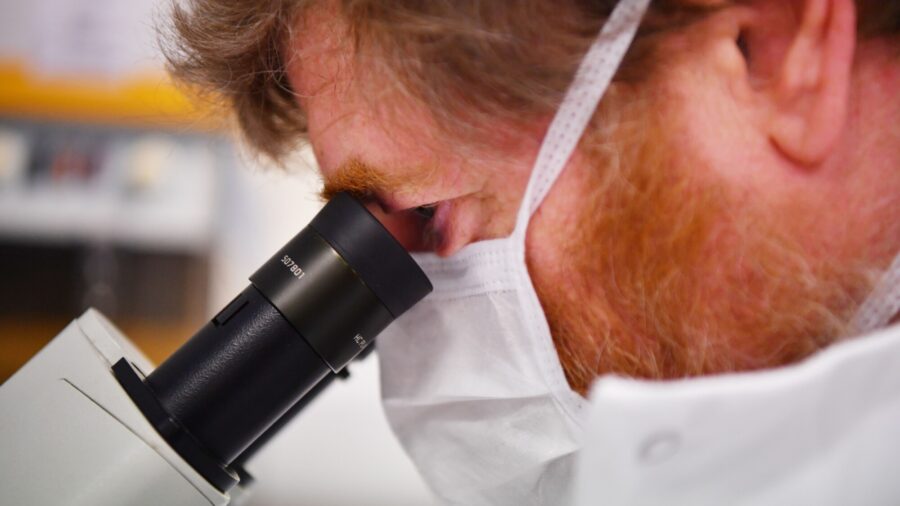A new study in the UK has found viruses similar to the strain of the CCP virus that causes the disease COVID-19 can survive on several common fabrics used in the health industry and transmit to other surfaces.
“When the pandemic first started, there was very little understanding of how long coronavirus could survive on textiles,” Microbiologist Dr. Katie Laird at De Montfort University (DMU) in Leicester said in an interview.
“Our findings show that three of the most commonly used textiles in healthcare pose a risk for transmission of the virus,” she continued. “If nurses and healthcare workers take their uniforms home, they could be leaving traces of the virus on other surfaces.”
Dr. Laird—who led the research group—worked together with virologist Dr. Maitreyi Shivkumar and postdoctoral researcher Dr. Lucy Owen.
The scientists’ study involved testing a model of a coronavirus with a very similar structure and survival pattern to that of the CCP (Chinese Communist Party) virus, or SARS-CoV-2, by adding droplets on polyester, polycotton, and 100 percent cotton and then monitor the stability of the virus on the different fabric materials.
Results in the research concluded that between the three fabrics used in the test, polyester posed the greatest risk for transmission—even after 72 hours with the possibility to transmit to other surfaces, scientists warned in the study published on the DMU website.
The coronavirus used in the test remained up to 24 hours on full-cotton samples that were contaminated by the droplets and just six hours on polycotton—a blend of polyester and cotton with ratios of each material varying, 65 percent cotton and 35 percent polyester is the most popular combination.

Upon concluding the study, the team of scientists started to find what is the most reliable way to wash the clothing to fully remove the virus contaminating the fabrics.
“The next stage of our work was to evaluate the infection control risk of washing healthcare uniforms contaminated with coronavirus,” Dr. Laird said.
“Once we had determined the survival rate of coronavirus on each of the textiles, we turned our attention to identifying the most reliable wash method for removing the virus,” she added.
For the most commonly-used healthcare textile, 100 percent full-cotton, the research found after using a detergent and a temperature above 152.6°F completely eliminated the virus.
“Investigating the tolerance of the virus to heat alone, findings showed that coronavirus was stable in water up to [140°F], but was inactivated at [152.6°F],” the research stated.
The team next looked at the risk of cross-contamination and found there was no risk of transmitting the virus when clean items were washed together with those contaminated.
“While we can see from the research that washing these materials at a high temperature, even in a domestic washing machine, does remove the virus, it does not eliminate the risk of the contaminated clothing leaving traces of coronavirus on other surfaces in the home or car before they are washed,” Dr. Laird warned.
“This research has reinforced my recommendation that all healthcare uniforms should be washed on site at hospitals or at an industrial laundry,” the microbiologist advised.
“These wash methods are regulated and nurses and healthcare workers do not have to worry about potentially taking the virus home.”
Dr. Laird said the findings of the study have since been shared with industry experts across the UK, USA, and Europe and were met with a positive response.
“Textile and laundry associations around the world are now implementing our key messages in their guidance for healthcare laundering, to prevent further transmission of coronavirus,” she said.

